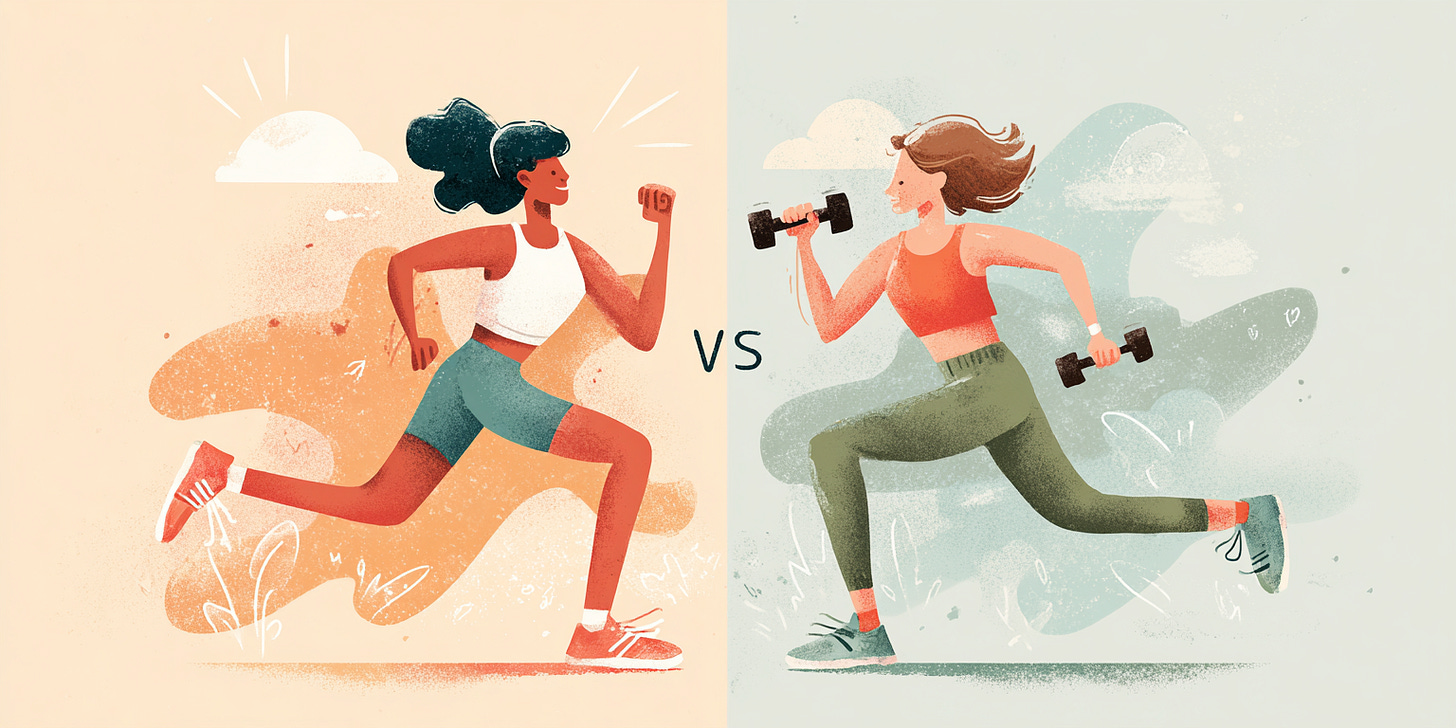How to Train Your Heart for Decades of Extra Life—Starting Now
Part 1 of 2: Cardio vs. Strength Exercise
What if the strongest medication for longevity wasn’t a pill in your medicine cabinet, but a certain speed you could uncover, with your own two legs?
And, what if you could develop a stronger heart, a sharper brain, and a more robust body, one deliberate step at a time?
For decades, we have been told that “cardio” is the way to maintain our health. This is good advice but not very specific. It would be like asking someone to eat food for nourishment.
What kind of food? How much? How often?
This is the first of a two-part series designed to give you the precise answers.
We’ll separate fitness into two crucial categories:
Cardio for Lifespan: This is about adding healthy years to your life. We’re talking about the engine—your heart, lungs, and circulatory system.
Strength for Healthspan: This is about adding vibrant life to your years. This is the chassis—your muscles, bones, and joints that allow you to enjoy that longer life.
Today, we build the engine. We’re going to move beyond vague advice and introduce you to the key metrics that researchers now know are directly linked to how long and how well you will live.
Coming next week: Strength, the key to keeping those extra years independent, steady on your feet, and pain-reduced.
Meet Your Lifespan Dashboard
Think of your body like a car. You can get a sense of its health by looking at the dashboard. For longevity, there are three critical dials you need to know.
Cardiorespiratory Fitness (CRF) & Your VO₂ Max Score (Your Engine’s Horsepower)
First, let’s talk about the overall quality of your engine.
Cardiorespiratory Fitness (CRF) is how well your body’s engine (heart and lungs) and fuel lines (blood vessels) work together to deliver oxygen to the wheels (your working muscles).
CRF is one of the strongest, most consistent predictors of living longer across ages, sexes, and ethnicities1,2.
So how do we measure this critical quality?
We use a score called VO₂ max.
If there is a single number that can predict your longevity, this is it.
VO₂ max represents your engine’s size—the maximum amount of oxygen your body can use during intense exercise.
A bigger number means you have an engine that can handle more stress and is far more efficient, far exceeding the impact of traditional risk factors like smoking or diabetes3.
Resting Heart Rate (RHR) (Your Engine’s Idle Speed)
If your VO₂ max is your engine’s top-end power, your RHR is its idle speed.
It’s how many times your heart beats per minute at complete rest. A progressively lower RHR is a direct sign that your CRF is improving. It means your heart is stronger and more efficient.
It’s a beautifully simple indicator of a well-tuned engine that you can track yourself, every morning.
Heart Rate Variability (HRV) (Your Body’s Adaptability Score)
This indicates the very small variations in time between your heartbeats. A higher variability indicates your nervous system is healthy, well rested, and adaptable.
Think about the suspension system of a high performing car that flexibly responds to bumps quickly when going down the road.
A lower heart rate variability indicates your body is under some sort of stress; whether this be due to sleep deprivation, sickness, or training level responses, you will need to consider a rest day or possibly an easier day4.
Understanding why these metrics matter is the first step.
In the rest of this post, I’ll give you the exact playbook on how to improve these numbers and build your own engine of longevity.
No complex jargon, just simple, actionable steps to get you started this week, no matter if you’re a complete beginner or a regular mover.


